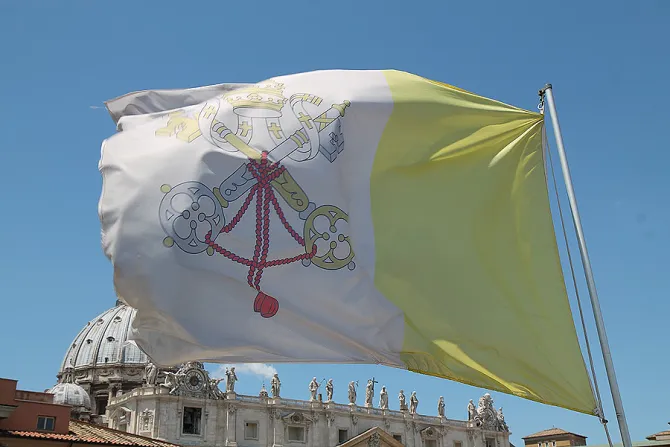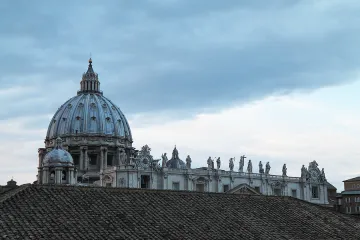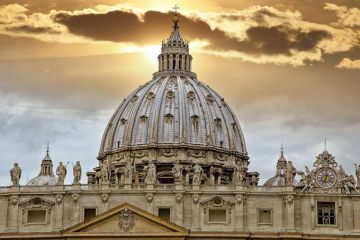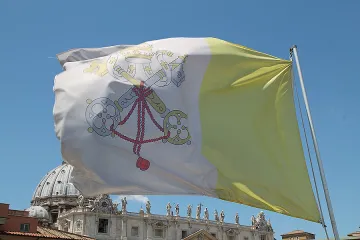Vatican City, May 13, 2022 / 06:18 am
After around 10 years and five progress reports, Moneyval has announced that the Holy See’s financial system will now be subjected to regular checks. The decision was disclosed in the European anti-money-laundering watchdog’s annual report.
Does this upgrade mean that all previous issues have been resolved? There is certainly an attempt to establish a narrative in which the new management of the Vatican’s internal financial watchdog (ASIF) has brought significant benefits. But a closer reading of Moneyval’s assessment offers a contrasting point of view.
First, it is necessary to understand how Moneyval’s evaluation rounds of the Holy See work. The procedures are explained on the organization’s website, albeit in somewhat technical language.
There, we read that “states or territories which have received compliant or largely compliant ratings in the six core recommendations in their evaluation report are only required to provide a biennial update of their progress in meeting the deficiencies identified in their mutual evaluation report or in taking other action to enhance their AML/CFT [anti-money laundering/counter financing of terrorism] regime.”
According to the procedures, “when the Plenary [Moneyval’s decision-making body] is satisfied with the progress reported, it shall adopt the biennial report. In case concerns are formulated, the Plenary shall adopt the report and place the state or territory in regular follow-up, applying, if appropriate, any of the steps of the compliance enhancing procedures.”
This step takes place when “when an assessed state or territory received partially compliant or non-compliant ratings in any of the six core recommendations or when the Plenary considers appropriate.”
Moneyval’s latest report on the Vatican was generally positive, though with some critical issues.
In particular, the general evaluations of the system’s effectiveness were divided into 11 “immediate outcomes.” These have four grading scales: from the lower part, there is “low” and “moderate,” and in the upper part, “substantial” and “high.”
The Holy See did not receive a “low” or a “high.” Of the 11 ratings, six leaned towards the low end (“moderate”) and five toward the high end (“substantial”).
The items tending to the upper part referred, among other things, to the legal framework developed over the years, which certainly cannot be attributed to the current ASIF management. The watchdog changed its name in 2020, but it did not make substantial changes to a structure that was already functioning and even doing so well, judging from previous reports.
The latest report contained a critical assessment of the effectiveness of money-laundering probes and strong criticism of the conduct of investigations that led to the current Vatican trial over the Secretariat of State’s management of funds.
The investigations led to the seizure of foreign financial intelligence units’ papers, prompting the Holy See’s suspension from the secure information system of the Egmont Group. This was only reversed after a protocol was established between the court and the authorities.
In its annual report, Moneyval dedicates a section to the Vatican.
On the positive side, it says: “The report states that the jurisdiction’s authorities have a generally good high-level understanding of their money laundering and financing of terrorism threats and vulnerabilities. In fact, in a range of areas, there is a detailed understanding of risk.”
But it adds that “domestic cases which have raised a red flag for potential abuse of the internal system by mid-level and senior figures (insiders) for personal or other benefits have not been addressed within the national risk assessment.”
Moneyval also takes note of money-laundering investigations until October 2020, which continued “partly because of late responses from foreign counterparts to requests for assistance and partly because of under-resourcing on both prosecutorial and law enforcement sides, where there has been an insufficient specialization of financial investigators.”
(Story continues below)
The watchdog believes that the Vatican’s court lacks specialists who should be employed to enable more in-depth investigations. Moneyval observes that “results in court have been modest with only two convictions for self-laundering.” But it says that “recent developments … in this area are encouraging.”
The report “highlights as well the importance given to confiscation as a policy objective, which is illustrated by the adoption in 2018 of a robust framework for non-conviction-based confiscation — which has since been used in a high-profile case.”
Therefore, Moneyval notes, “the Holy See (including the Vatican City State) has a domestic mechanism in place that allows to give effect to United Nations’ sanctions without undue delay.” But it adds that “some delays persist in transposing such designations into national lists.”
The Institute of Works of Religion (the IOR, often called “the Vatican bank”) is described as “the only authorized institution” and is also rated positively. The report says that the IOR “has a sound understanding of its money laundering and financing of terrorism risks.”
Regarding the Vatican’s internal financial watchdog, it says: “The supervisor has a good to a very good understanding of the risk profile of the authorized institution and its most recent inspection took place in 2019. Coverage and quality look to be very good, including consideration of risks presented by insiders.”
Finally, “the report compliments the national authorities for efforts invested in rendering constructive and timely international co-operation.” It concludes that “the Holy See (including the Vatican City State) will be subject to Moneyval’s regular follow-up reporting process as a result of the positive report.”
In practice, there is nothing new compared to the progress report. Indeed, there is not much new even when compared to the legal framework set up by the old management of the Vatican’s financial intelligence authority.
The report refers to a period that includes October 2020 and starts from all the reforms carried out under the direction of Tommaso Di Ruzza and the presidency of René Brülhart. It is ironic that, despite international recognition for the work done under them, the two men are now standing trial at the Vatican and the ASIF has joined the proceedings as a civil party.
Furthermore, the positive opinion on the IOR came in the wake of the favorable judgment already contained in the first Moneyval report on the Vatican in 2012. The report said that the institute sometimes exceeded the required standards.
Again, there is a narrative that gives much credit to the IOR’s subsequent management. At the same time, Paolo Cipriani and Massimo Tulli, the director and deputy director of an IOR that made large profits, went on trial in the Vatican and were sentenced in two degrees of judgment for mismanagement. (An appeal is ongoing.) At the same time, the two were acquitted of the charges in Italy.
In his 2019 Christmas greeting to the Roman Curia, Pope Francis praised the Vatican’s progress toward financial transparency. Broadly speaking, the reform of the Vatican financial system had crystallized by 2020, benefiting from all the work previously done to this end.
Undergoing regular Moneyval follow-up procedures is not a promotion for the Holy See. After years of positive evaluations, it is instead a mild upgrade. Following this change in status, the next Moneyval report only will say whether the Holy See is continuing to build a money-laundering prevention system that adheres to international standards.






